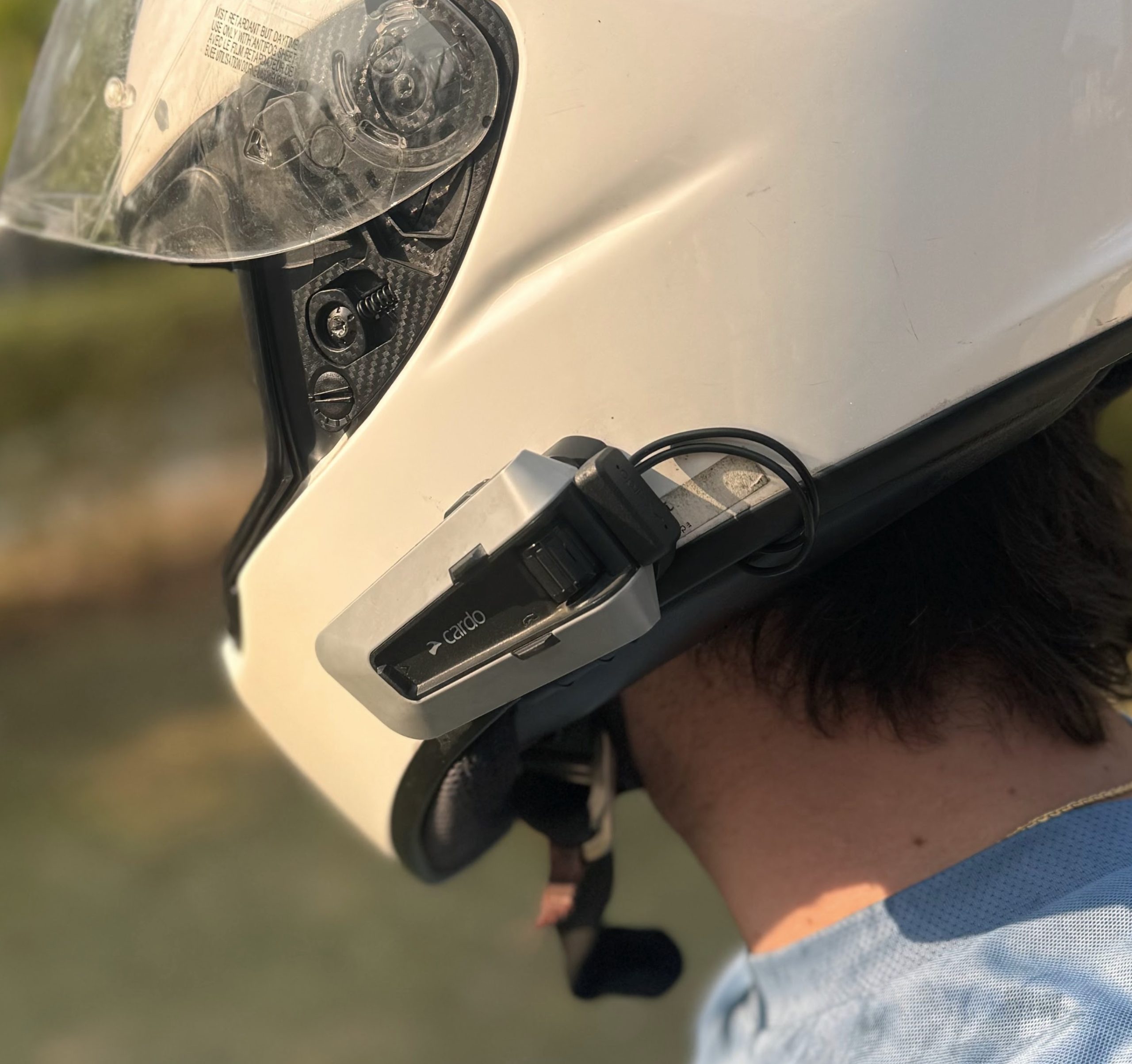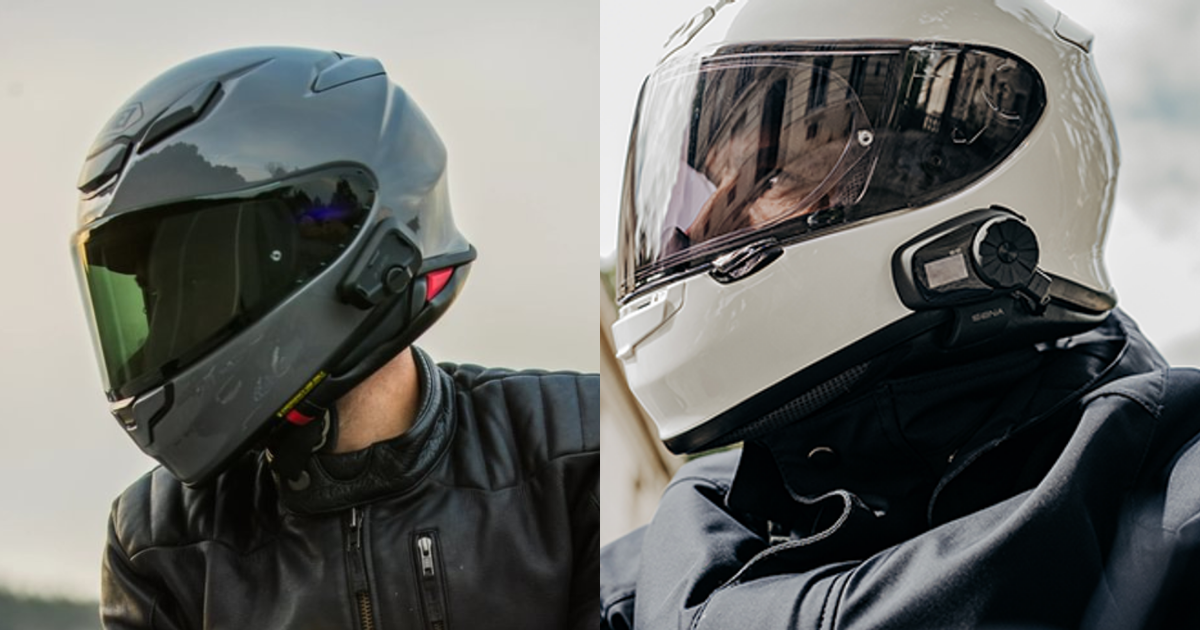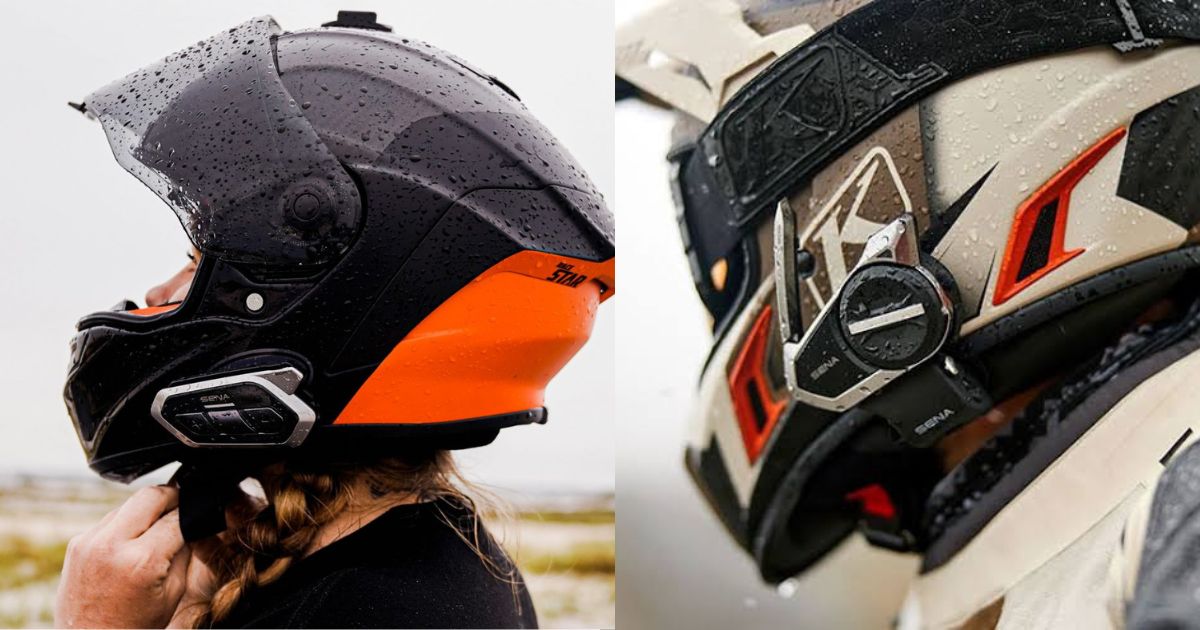
Cardo Packtalk Edge vs Custom: Which Suits Your Ride?
left for contents
If you’ve been riding for more than a few months, you’ve probably learned that a good motorcycle communication system can change the way you ride. It’s not just about chatting with friends — it’s about safety, navigation, music, and staying connected when it matters most.
I’ve been riding long enough to have gone through my share of comms units. Some were fantastic upgrades that made every ride better. well, let’s just say they ended up in a drawer. So when I got the chance to spend time with both the Cardo Packtalk Edge and the Cardo Packtalk Custom, I went in with high expectations and a healthy dose of curiosity.
$359.96 | $199.99 |
|
|
|
|
- 1.6 km (~1 mi) unit‑to‑unit range (works through obstacles, we've tested)
- Up to 8 km (5 mi) group range
- 13 hr battery life
- Magnetic Air‑Mount snaps securely
- Fiddly to remove with gloves
- Not ideal if your crew all use Sena
- 15+ rider intercom over Mesh
- 10+ hour battery life
- Half the price of similar units
- Connects to phone for music, GPS
- Upgrade required for Bluetooth intercom (only when connecting to old units or Senas)
On paper, these two share a lot: similar shape, the same waterproofing, both running Cardo’s latest Bluetooth and mesh intercom tech. But once you live with them, differences start to appear. Those differences can determine whether you feel like you’ve made the right investment or you’re left wishing you’d chosen differently.

First Impressions & Build Quality
Straight out of the box, the Packtalk Edge feels premium. The casing has a sleek matte finish with clean lines, and the build quality just screams “ready for anything.” The buttons are solid, tactile, and easy to find even with thick gloves. Cardo clearly thought about riders who don’t want to fiddle around when they should be focusing on the road.
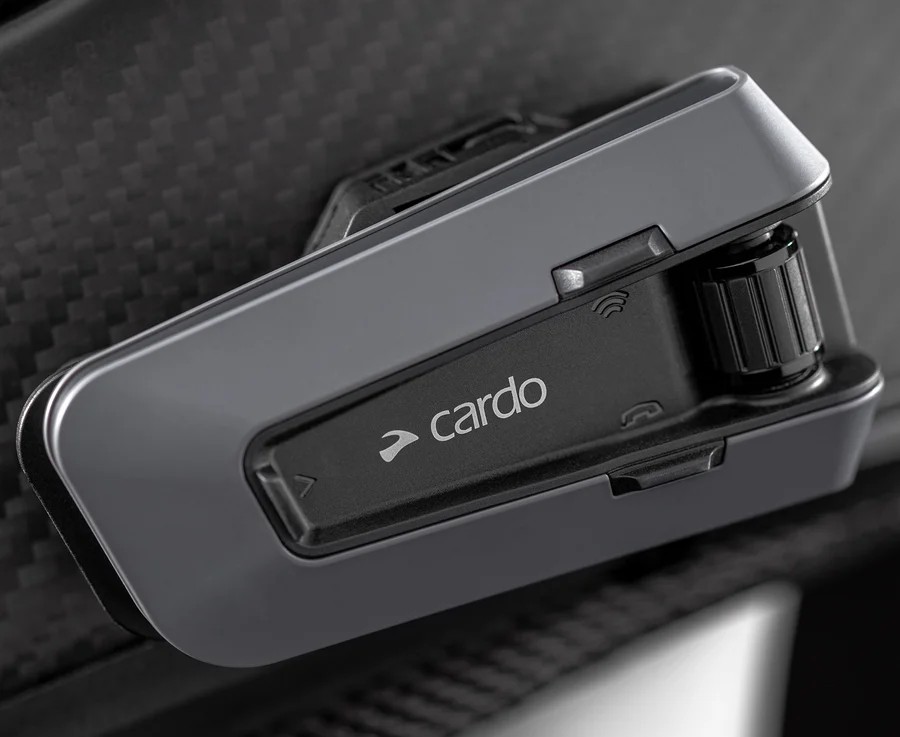
The Packtalk Custom, meanwhile, still feels sturdy and well-built, but you notice small differences in fit and finish. It’s a little more understated, and while the housing is just as weatherproof (IP67), it doesn’t have quite the same “top-shelf” vibe the Edge gives off.
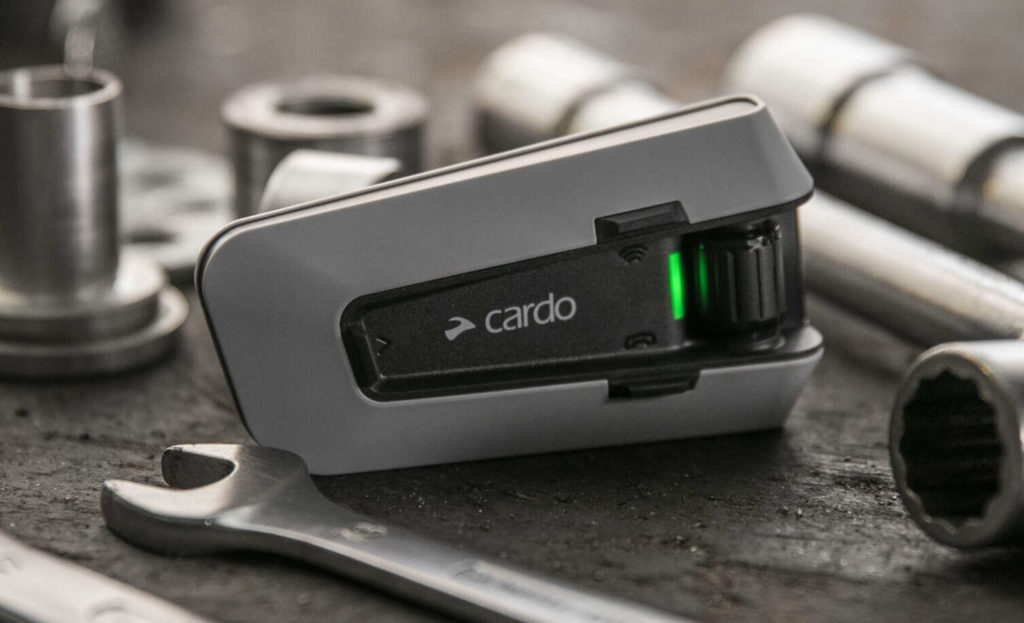
Durability-wise, both can take a beating. I rode with them in rain, heat, and even a dust storm on a provincial back road — no issues with performance. That IP67 rating means they can handle being submerged briefly in water, so rainstorms are no problem.
Check out our detailed review of the Cardo Packtalk Edge with mesh and magnetic mount
Mounting Systems – Everyday Convenience
Here’s where my first big preference came in: the mounting systems.
Packtalk Edge – Magnetic Air Mount
This is honestly addictive. You line the unit up, and click, it’s mounted. No fumbling, no forcing. Even with gloves on, I could snap it into place in under a second. When I needed to remove it, a quick press and it was off.
I tested it on bumpy roads and at high speed it never came loose, not even close. It’s not just about convenience, it’s about making it so easy to remove your unit that you’ll actually take it with you instead of leaving it on the helmet and risking theft.
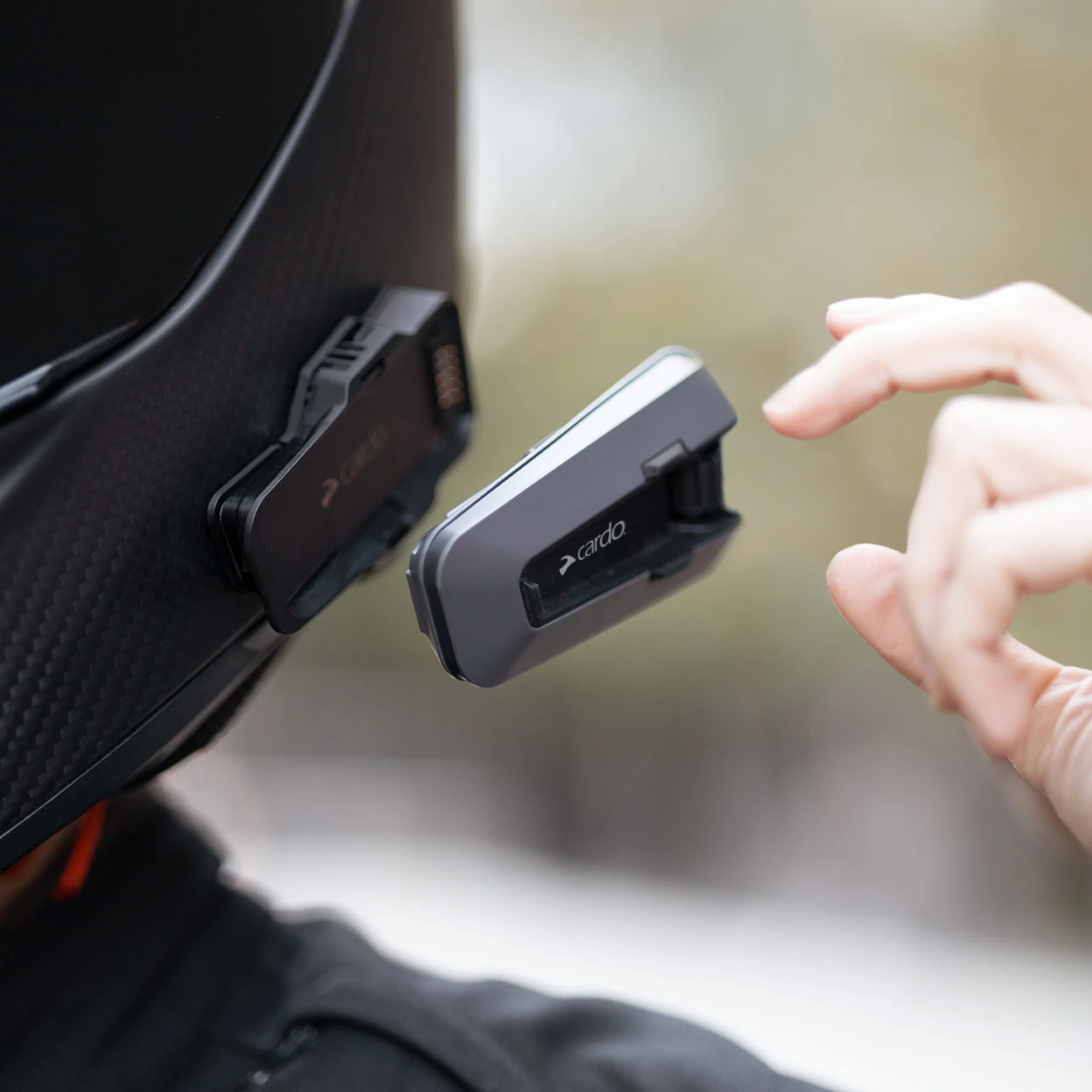
Packtalk Custom – Clip Mount
The Custom uses a more traditional clip-and-secure method. It’s perfectly stable and won’t budge once it’s attached, but going back to it after using the magnetic mount felt like stepping back in time. It’s a two-hand job, and not something you want to do in a rush at a fuel stop.
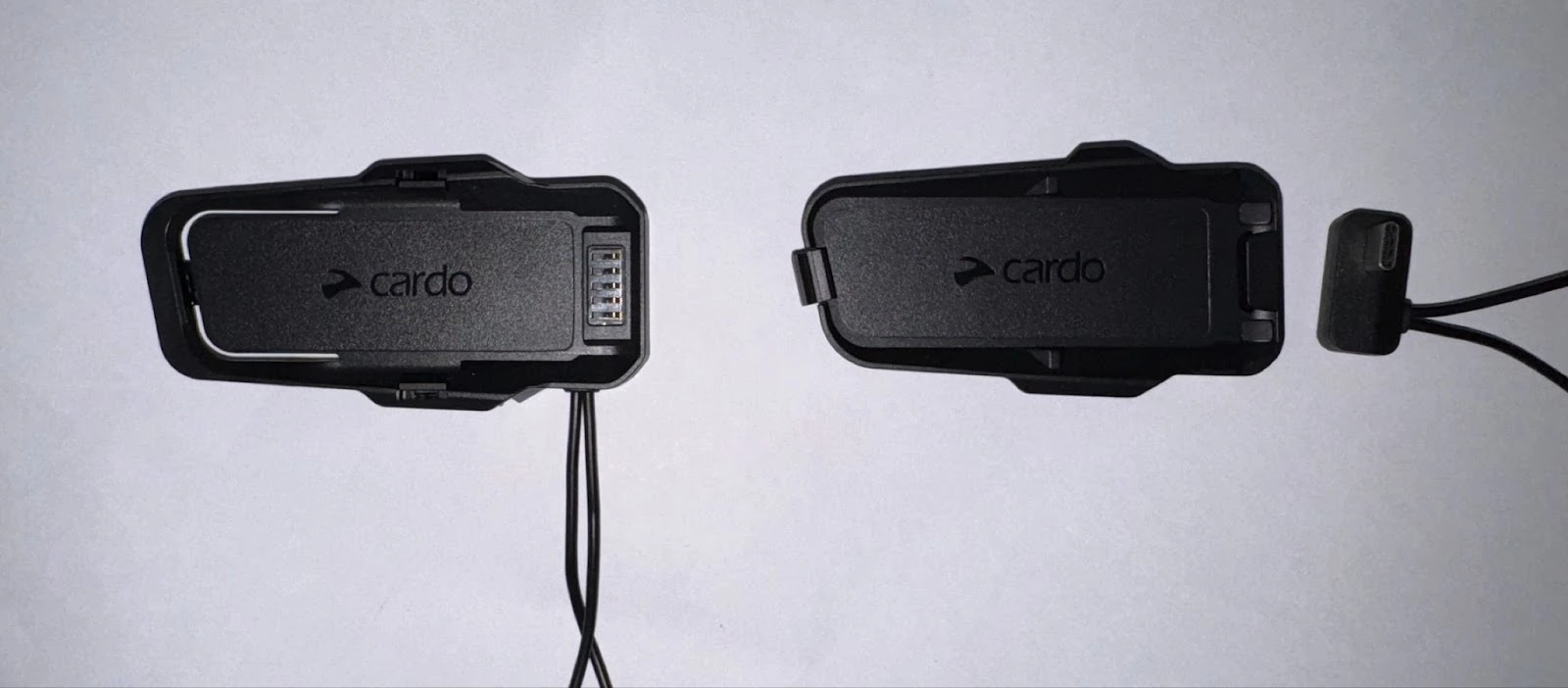
Audio Performance – JBL vs Standard Speakers
The second thing that really stood out was the sound quality.
Packtalk Edge – JBL 40mm Speakers
These things punch. Even with my visor cracked open at 100+ km/h and wind noise whipping through, I can still hear music clearly. Bass is deep, mids are rich, and vocals come through without distortion. The JBL tuning adds warmth and fullness that makes long rides more enjoyable.
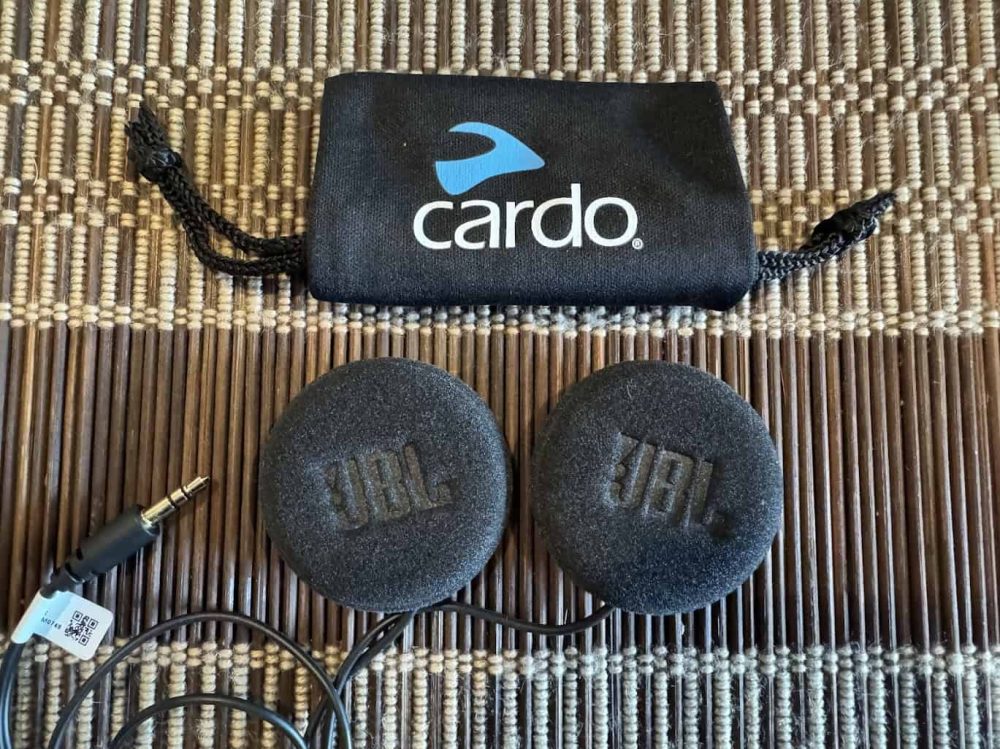
Packtalk Custom – Standard Cardo Speakers
Out of the box, the Custom ships with Cardo’s standard 40mm speakers. They’re better than most budget comms units but when you’ve heard the JBL set, you’ll notice the difference. Music lacks a bit of depth, especially in bass-heavy tracks.
You can unlock JBL audio tuning through a subscription upgrade, but tuning alone doesn’t change the physical speaker hardware so it’s not quite the same as having the real JBL set.
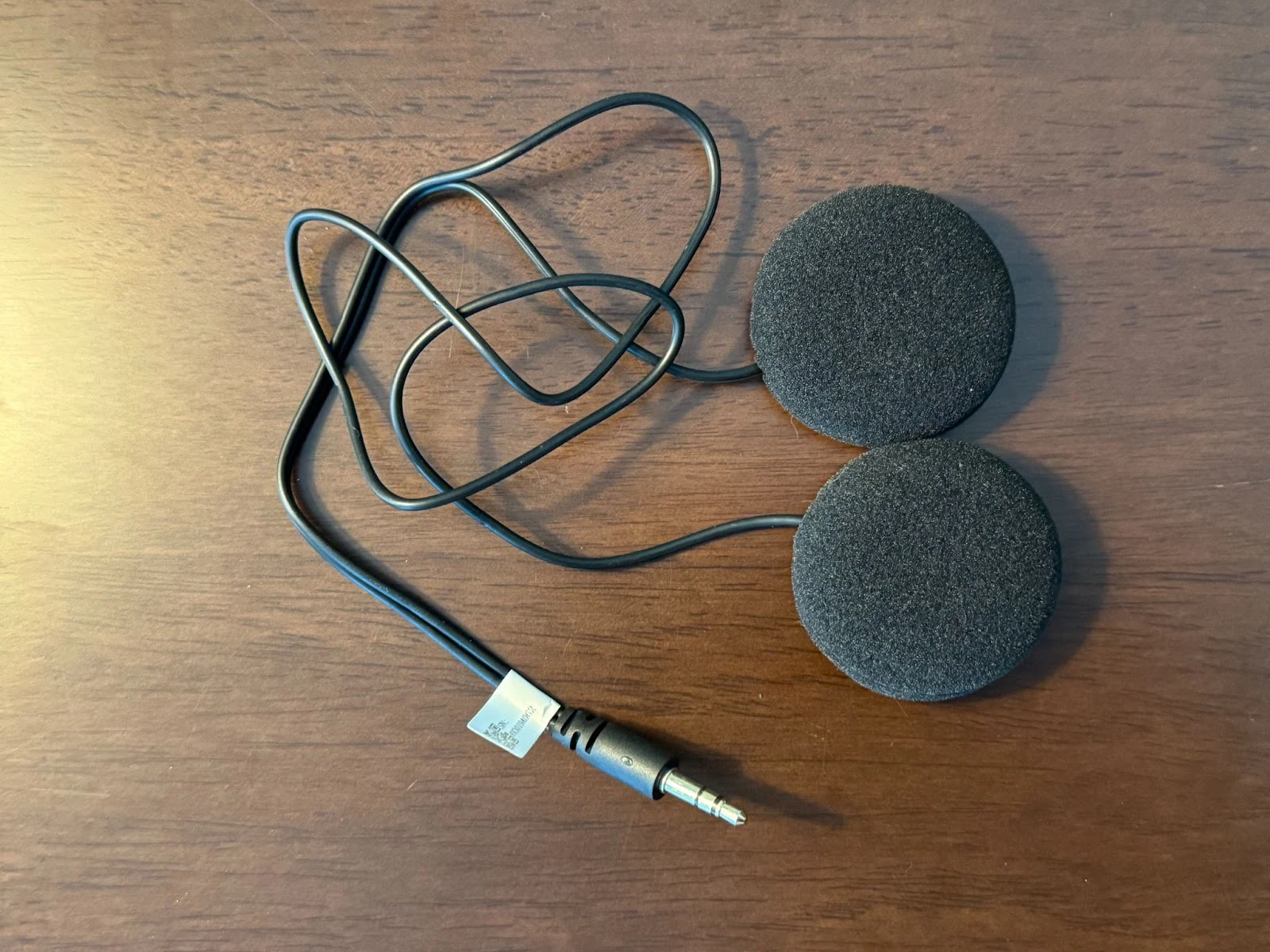
Microphone & Wind Reduction
Both the Cardo Packtalk Edge and Packtalk Custom come with noise-cancelling microphones designed to filter out wind, engine, and road noise. In my tests, even at highway speeds with strong crosswinds, conversations stayed clear and easy to follow. The mic’s ambient noise filtering does an excellent job of locking onto your voice while cutting background interference perfect if you ride with a loud exhaust, an open-face helmet, or in busy traffic.
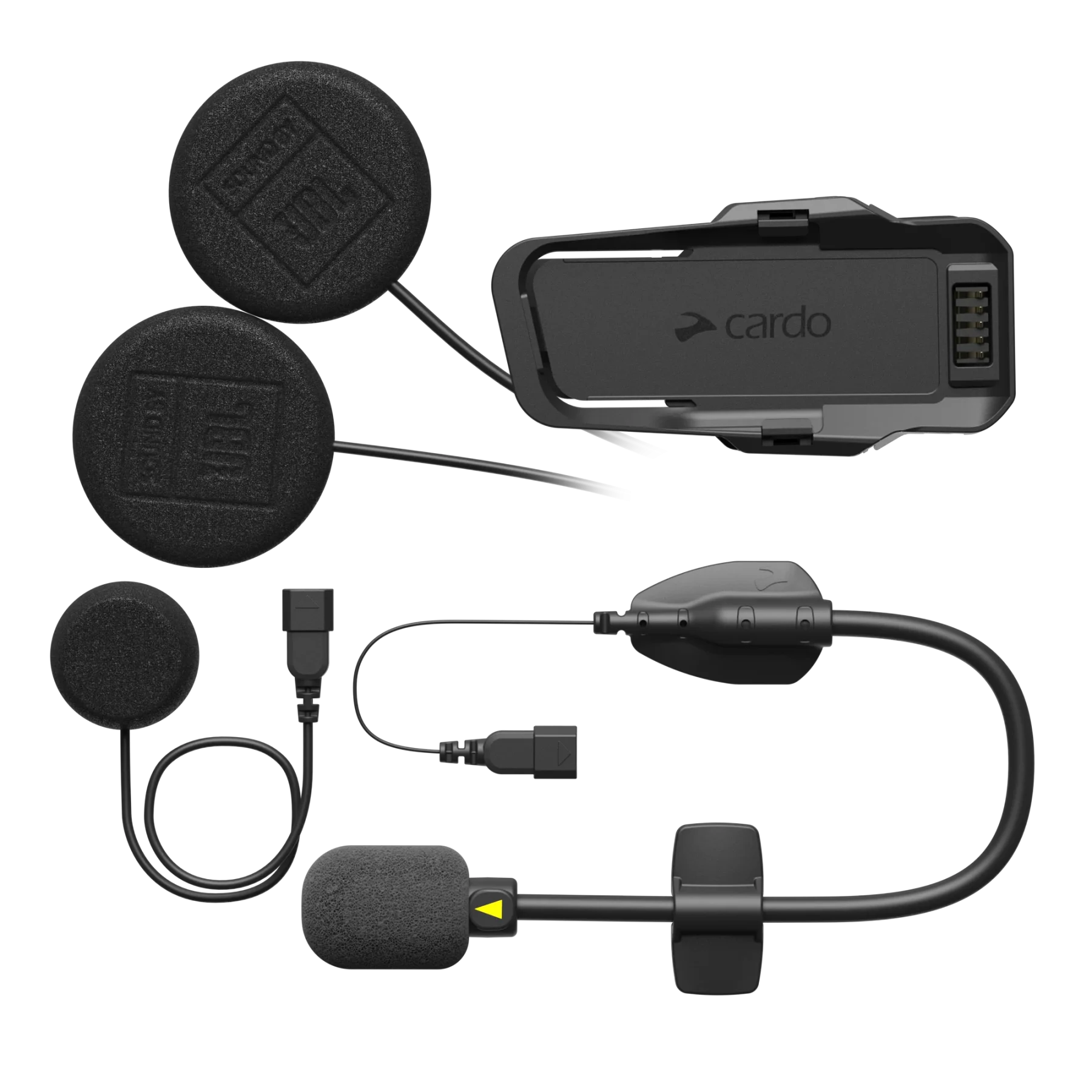
Pair that with the clean, balanced output of the speakers (JBL on the Edge, standard Cardo on the Custom), and you get communication where both riders can clearly hear each other even in challenging conditions like:
- Highway riding with strong winds
- Passing trucks with heavy turbulence
- City riding with constant traffic noise
- Open visor at speed
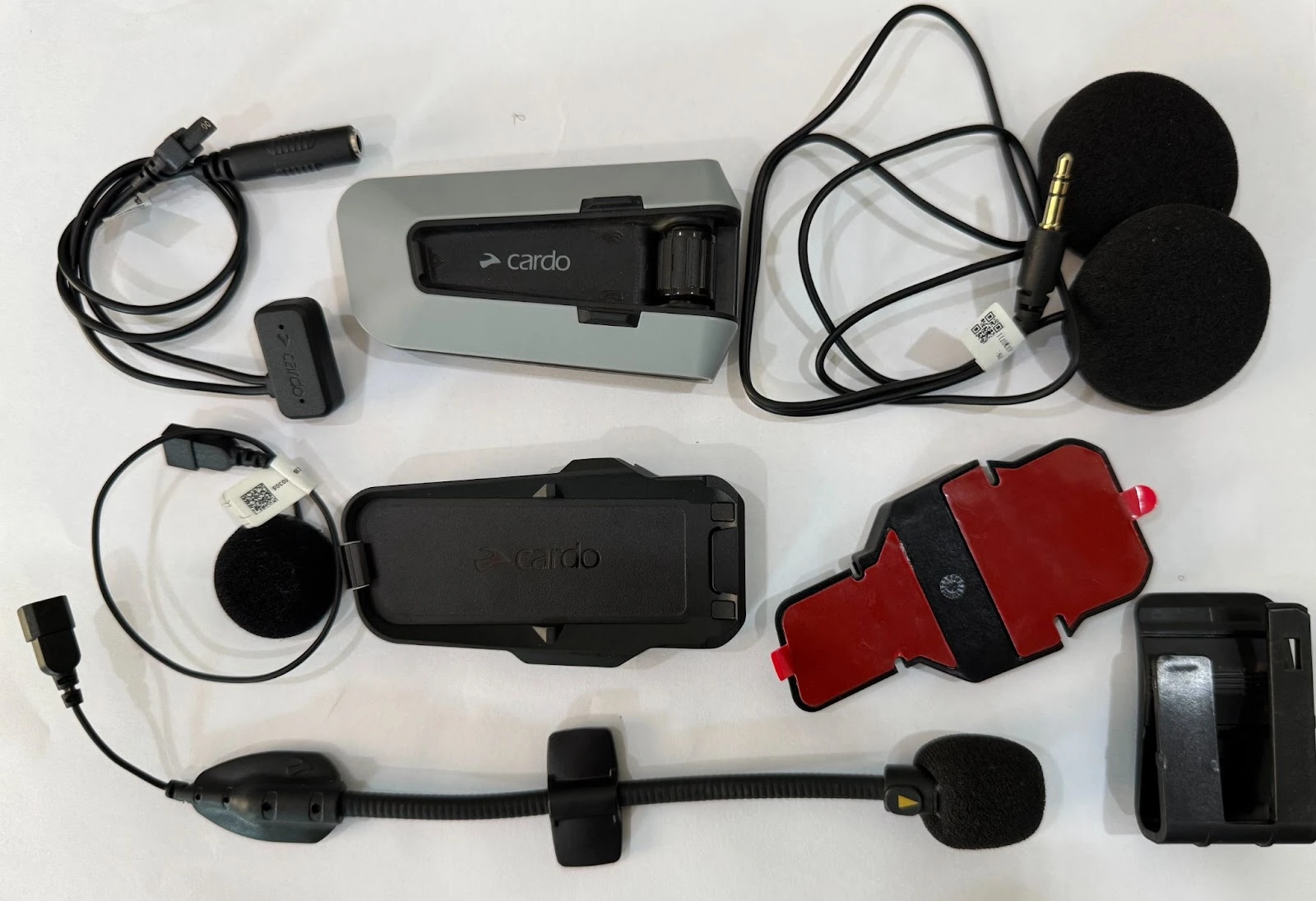
Check out our Cardo Packtalk Custom review—mesh intercom, sleek design
Automatic Volume Control – Small Feature, Big Impact
Both models feature Automatic Volume Control (AVC). This might sound like a gimmick until you’ve used it on the highway. The system detects surrounding noise (wind, engine, traffic) and adjusts your volume automatically.
On my rides, this meant I wasn’t constantly saying “Hey Cardo, volume up” every time I hit 80+ km/h. And when I slowed back down in town, no more “Hey Cardo Volume Down” also I didn’t get blasted with overly loud music.
Riding with the Group – Mesh Communication
Here’s where Dynamic Mesh Communication 2.0 (DMC) comes into play.
- Range: 1.6 km rider-to-rider, up to 8 km total in a group
- Capacity: Up to 15 riders connected
- No fixed order: Riders can move around freely
- Auto reconnect: Drop out of range? It’ll reconnect when you’re back in range without pressing a button.
- Easy Pairing: Turn on the app or put your cardo in DMC pairing mode, in less than 20 seconds the units are already paired to each other.
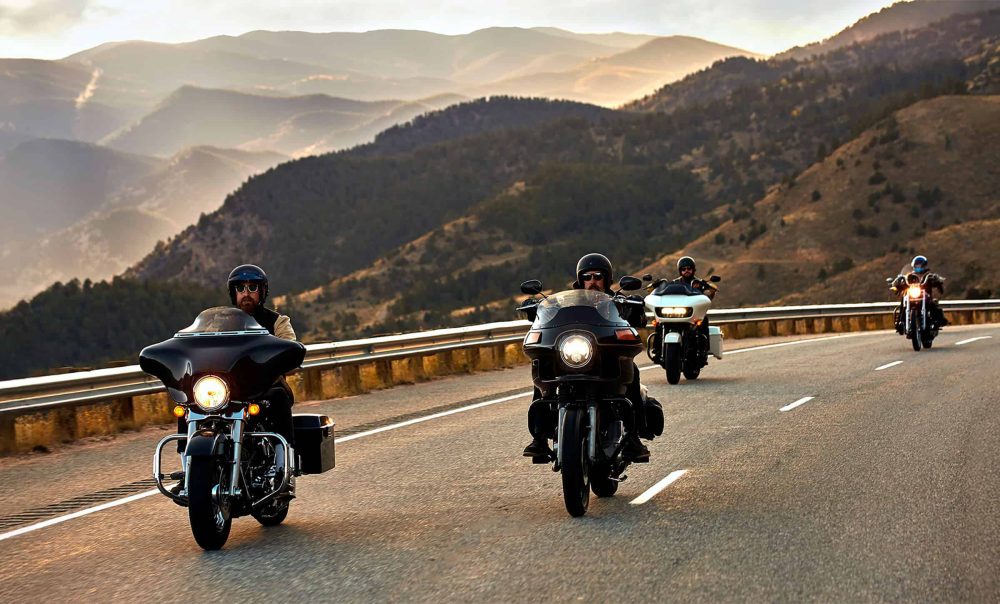
In my group rides, the Edge just worked. Everything was unlocked from day one — mesh intercom, music sharing, and full voice commands. We could split up, pass trucks, get separated in traffic, and reconnect seamlessly.
The Custom uses the same DMC 2.0 tech, but advanced mesh features require a subscription. Without it, you’re limited to more basic connectivity options.
Voice Commands – Real Hands-Free Control
The Edge lets you use “Hey Cardo” voice commands without touching the unit. This is one of those features you don’t think you need — until you use it. Being able to change volume, skip songs, or call a riding buddy without moving your hands off the bars is both safer and more convenient.
The Custom can also use voice commands, but again, some advanced commands are locked behind a subscription.
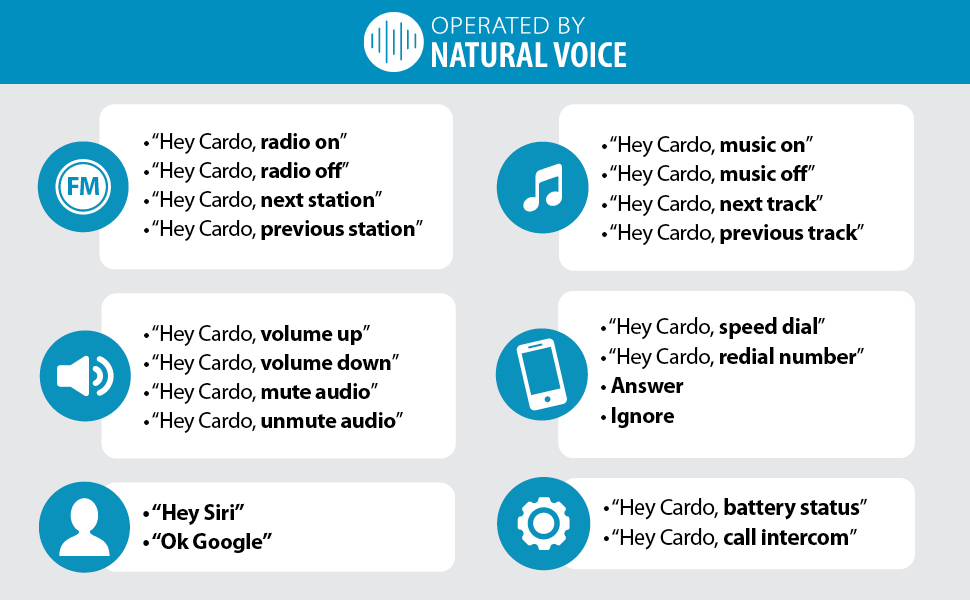
Subscription Model – The Big Divider
Here’s where the Packtalk Custom’s lower price starts to make sense.
Packtalk Edge
- Price: $399.95
- All features included for life
- No subscriptions, no hidden costs
Packtalk Custom
- Price: $269.95
- Features locked into subscription tiers:
- Silver: Music Sharing, Audio Profile, Speed Dial
- Gold: Bluetooth Intercom, 2nd Bluetooth Device
- Platinum: Voice Commands, Eco Mode
- Pay only for the months or annually if you need premium features
If you’re a solo commuter, you can stick to the base tier year-round and save money. But if you regularly ride in big groups, those subscriptions add up.
Battery Life & Charging
Both units offer around 13 hours of talk time. this meant I could ride all day and still have juice left.
The USB-C fast charging is a game-changer: 20 minutes of charging gives you about 2 extra hours of use. This saved me more than once on multi-day rides where I forgot to charge overnight.
Price & Long-Term Value
Here’s the reality:
- Edge: High upfront cost, but you never pay again. Best value for frequent riders.
- Custom: Cheaper upfront, but premium features require ongoing payments. Best for riders who don’t always need them.
Over three years, if you keep a Custom on the Platinum plan year-round, you’ll spend more than the cost of an Edge.
Which One Should You Choose?
Go for the Packtalk Edge if:
- You ride in large groups often
- You value convenience (magnetic mount, full voice commands)
- You hate subscriptions
- You want the best audio experience out of the box
Go for the Packtalk Custom if:
- You mostly ride solo
- You want a lower upfront cost
- You’re okay with paying for premium features only when needed
| Feature | Cardo Packtalk Edge | Cardo Packtalk Custom |
| Dynamic Mesh Communication 2.0 (DMC) | Yes, 1.6km (rider – rider)/8km (group) | Yes, 1.6km (rider – rider)/8km (group) |
| Bluetooth Version | 5.2 | 5.2 |
| Sound By JBL | Yes | No |
| Voice Commands | Yes – “Hey Cardo” | Subscription Based |
| Fast Charging | Yes | Yes |
| Mount | Magnetic Air Mount | Clip Type |
| Waterproof | Yes (IP67) | Yes (IP67) |
| Subscription Requirement | No | Yes (Silver, Gold, Platinum) |
| Price | $399.95 | $269.95 |
What’s in the Box
Whether you choose the Edge or Custom, the package includes:
- The main Cardo unit (Edge or Custom)
- Helmet mount kit (Magnetic Air Mount for Edge / Clip Mount for Custom)
- 40mm speakers (JBL for Edge / Standard Cardo for Custom)
- Boom microphone (for open-face or modular helmets)
- Wired microphone (for full-face helmets)
- USB-C charging cable
- Alcohol pad & Velcro pads for mounting
- User manual & quick-start guide
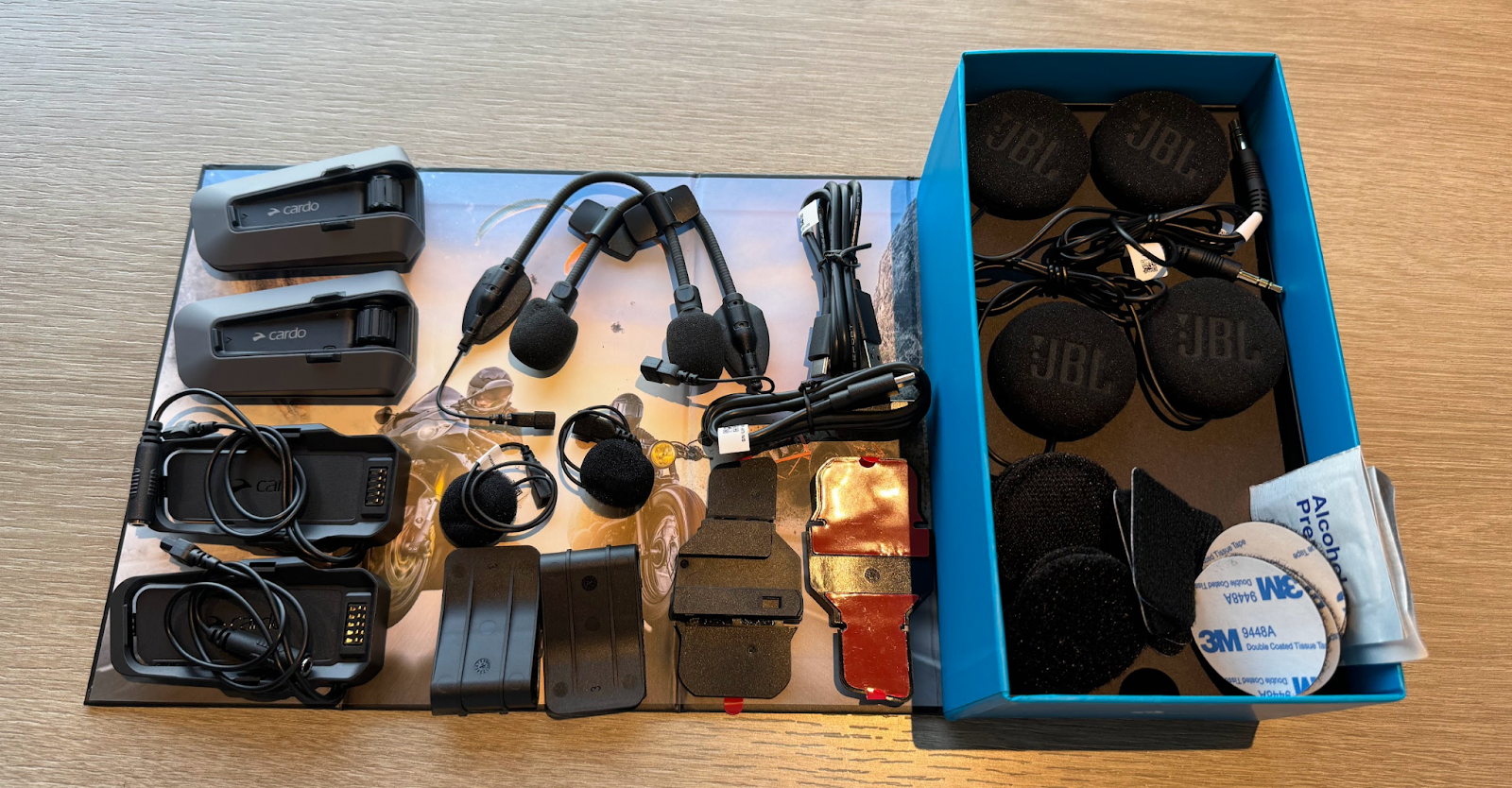
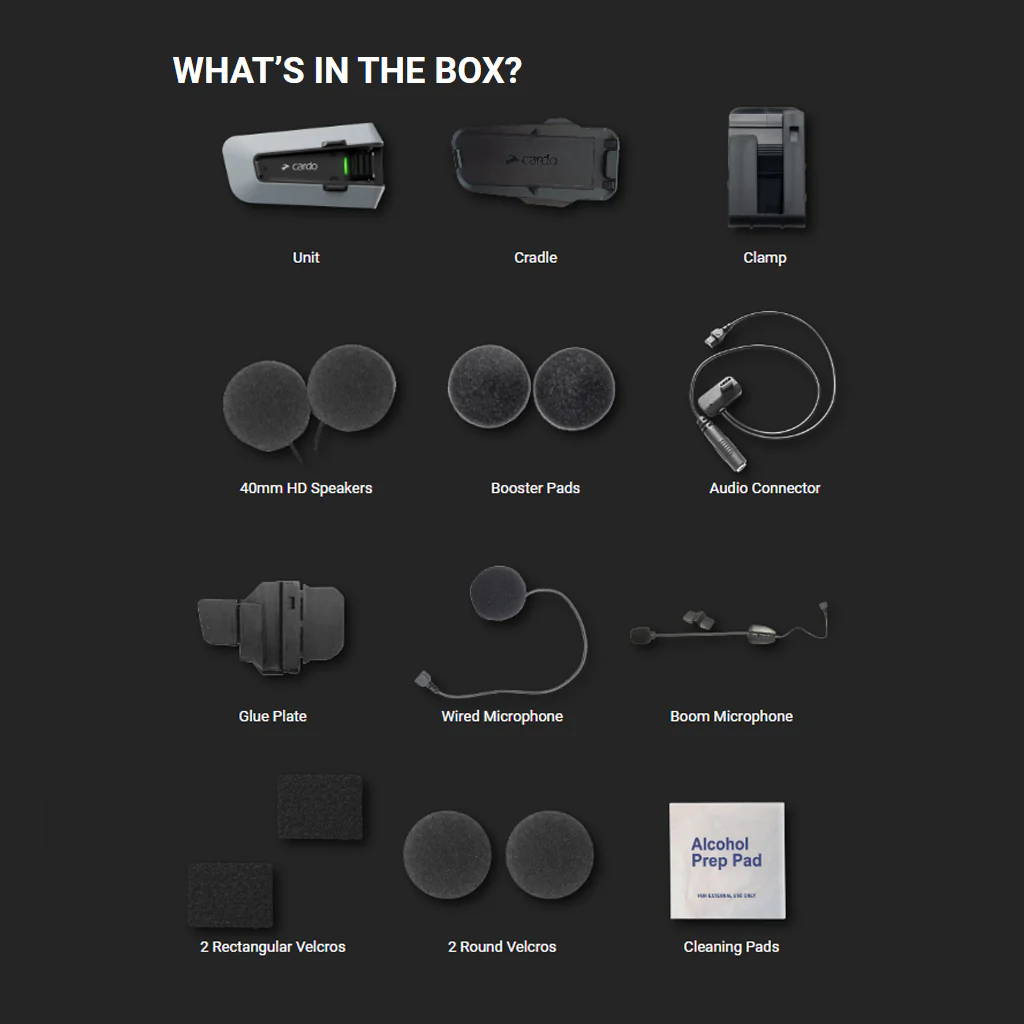
Love a helmet that only fits a specific comms unit?
HJC, Shoei, Schuberth, Nexx and even Harley all try to force you in to custom-fit comms units that may not fit how you ride. So Tubs Jackson created an adapter to get a factory fit for any comms unit on these otherwise amazing helmets.
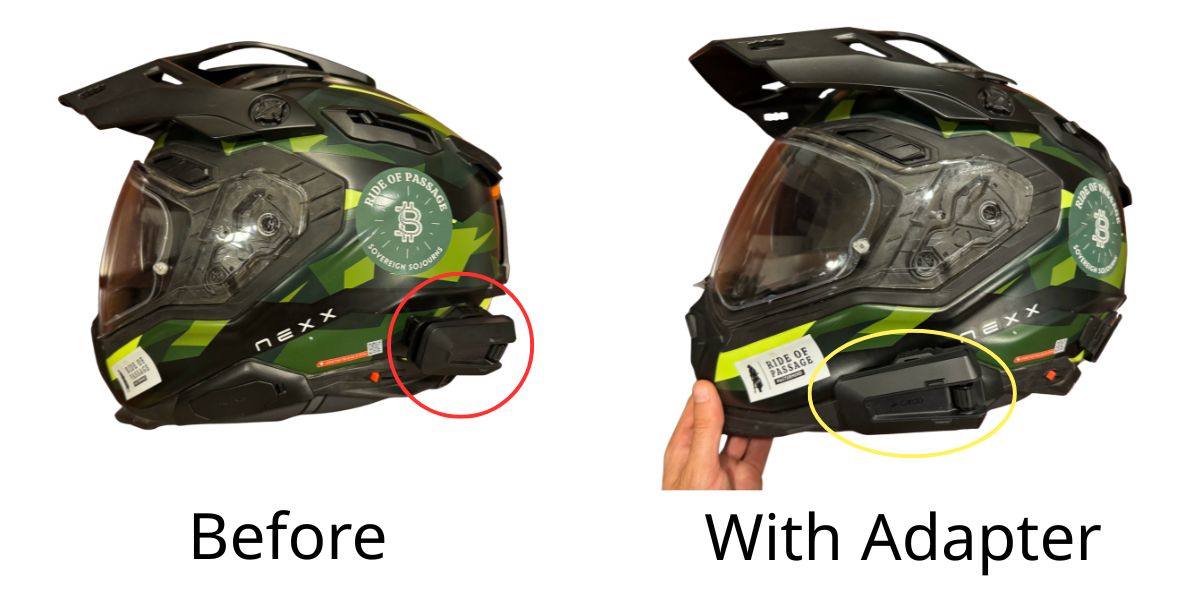
Tubs Jackson is a weird name, I know, but I have their adapter in my Nexx X.WED3 helmet and it’s rock solid. Much nicer than reaching way back to where I had the sticky mount before. I wish I’d thought of this idea.
Tip: Get FREE SHIPPING just by buying here or using code BETTERONTHEROAD at checkout.
Final Verdict
Both the Cardo Packtalk Edge and Cardo Packtalk Custom deliver excellent communication, sound quality, and weather resistance. The decision comes down to how you ride and how you want to pay for features.
For me, as someone who rides often with groups and values premium audio, the Edge is worth the extra money upfront. But if you’re more of a casual, mostly-solo rider, the Custom can save you money without sacrificing the basics.
$359.96 | $199.99 |
|
|
|
|
- 1.6 km (~1 mi) unit‑to‑unit range (works through obstacles, we've tested)
- Up to 8 km (5 mi) group range
- 13 hr battery life
- Magnetic Air‑Mount snaps securely
- Fiddly to remove with gloves
- Not ideal if your crew all use Sena
- 15+ rider intercom over Mesh
- 10+ hour battery life
- Half the price of similar units
- Connects to phone for music, GPS
- Upgrade required for Bluetooth intercom (only when connecting to old units or Senas)
Related
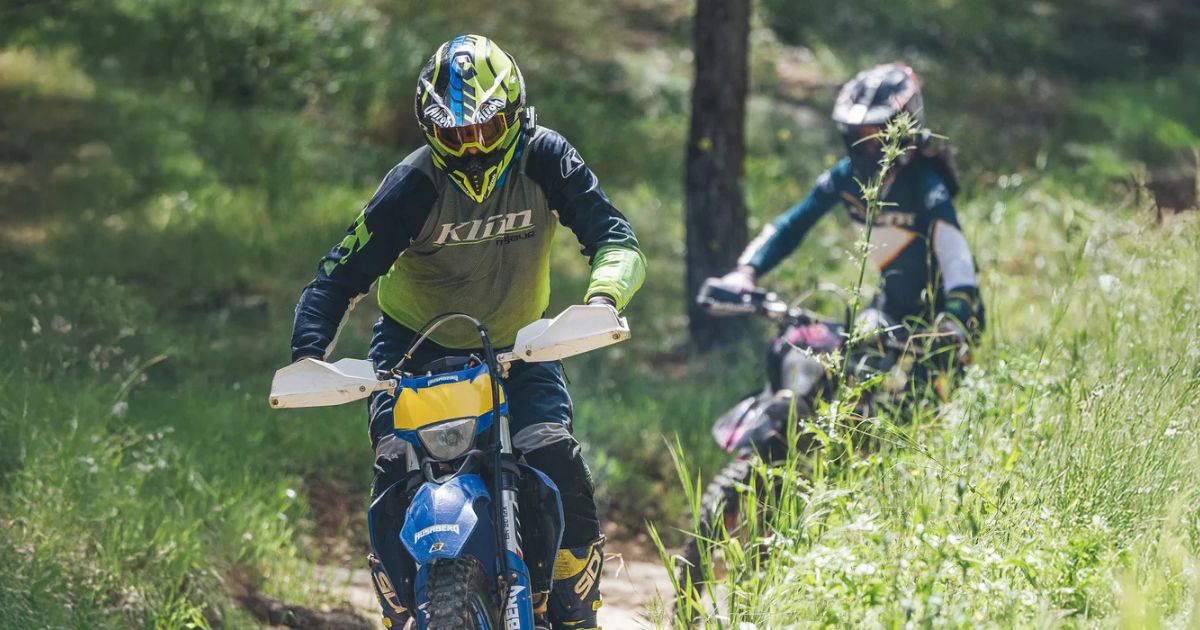
Best Cardo Communicators for Motorcycle Riders
Find the best Cardo communicator for your rides—compare mesh, Bluetooth, sound, and features to match your budget, group size, and style.


